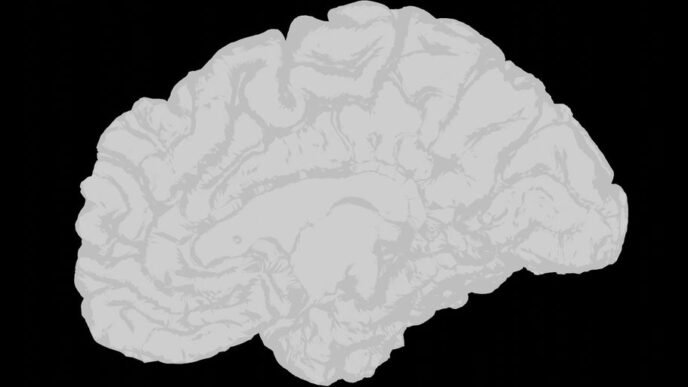
By Lance Eliot, the AI Trends Insider
A web-broadcasted debate recently took place that illuminated various key issues confronting the advent of AI-based autonomous cars and trucks.
In the debate, Princeton’s Professor Alain Kornhauser opted to take the position that it will be the best of times ahead, and his clashing counterpart was Dr. Sven Beiker, Founder and Managing Director of Silicon Valley Mobility based in Palo Alto, California, opting to take the position that it will be the roughest of times ahead for the emergence of viable and widespread self-driving vehicles.
The overarching theme was whether there is a potential of a “new normal” that might overtake the existing autonomous car and truck efforts in a post-pandemic era. For information about future such debates, visit the smartdrivingcar.com website that organized and announced the event.
The debate was joined by several panelists, consisting of Richard Mudge as moderator (President of Compass Transportation and Technology), Jim Scheinman (Founding Managing Partner at Maven Ventures), Jane Lappin (Director of Government Affairs and Public Policy at Toyota Research Institute), Brad Templeton (writer and industry analyst at Robocars.com), and Michael Sena (automotive industry expert, heralded especially for his newsletter The Dispatcher).
I have crafted a recap of some selected points and provide those highlights here.
Safety And Car-Related Deaths
Start with perhaps one of the most widely touted and yet controversial topics, the safety of self-driving cars.
There are many in the media and the automotive industry that justify the need for having self-driving cars by emphasizing that human drivers are “unsafe” and that AI-driven vehicles will be presumably safer. The basis for asserting that human drivers are unsafe is typically centered on the number of annual deaths that occur due to human-driven car crashes, amounting to about 40,000 deaths annually in the United States alone.
Of course, any deaths due to car crashes is one too many, and we would all undoubtedly agree that averting deaths and injuries from car crashes is a laudable goal.
How can there be any counterargument to the notion of seeking to avoid car-related deaths, you might be wondering?
Some say that you need to put your eye on the ball and not be tricked into looking in the wrong places to solve the problem.
Self-driving cars, if they indeed turn out to be safer than human drivers, which we don’t know whether that will occur, would seem to be a pretty costly solution to the problem of car-related deaths, some say, and there are other ways to deal with the deaths-inducing aspects, doing so right away and at a lesser overall cost.
For example, consider the heartbreaking and dreadful outcomes of drunk or intoxicated driving.
An estimated one-third of the U.S. car-related deaths are due to drunk drivers.
Some point out that if you installed into every car, every conventional car, a device to detect drunkenness or intoxication of the driver and automatically prevented the use of the car in that use case, you would presumably reduce the number of annual car crash deaths by an approximate third.
The cost for that solution is low in comparison to the costs of self-driving cars per se and can be immediately put into use, rather than waiting for the chance that self-driving cars will be suitably readied for everyday use on the roads.
Another one-third of car-related deaths are due to speeding, which again could be presumably solved by some form of speed dampener installed into cars (though, this isn’t quite as straightforward since it isn’t the speed alone that’s the crux of the issue), and about one-fifth of car fatalities are due to distracted driving (one could possibly avert distracted driving to some degree via the adoption of in-car monitoring systems such as a steering wheel that detects hands-on-the-wheel, inward-facing cameras that detect the eyes-on-the-road, etc.).
The overall point is that there are ready-to-go means to reduce the annual number of fatalities of driving, and yet “the solution” instead seems to be self-driving cars, rather than aiming at existing approaches.
So, it is not an argument about saving lives (i.e., all agree to the desire to do so), and instead of an argument about what is the most economical and timely way to save lives.
During the debate, a point was discussed that safety then is not the genuine basis for self-driving car adoption and rather exists as a necessary condition of self-driving car acceptance.
In other words, self-driving cars are only going to be viably accepted if they are safe, presumably as safe as human drivers, or more so, and it is not because of the “safety” that they need to be devised.
Why then do self-driving cars “need” to be devised?
That question opens a cornucopia of reasons, of which, an especially societally-based purposeful motivation consists of being able to extend mobility to those that are today mobility disadvantaged or underserved. In theory, self-driving cars will be quite low-cost methods of travel and provide a door-to-door and anywhere-to-anywhere form of transportation. This provides the impetus for what some refer to as a mobility-for-all future.
For my indication of the moonshot nature of achieving autonomous vehicles, see this link: https://www.aitrends.com/selfdrivingcars/self-driving-car-mother-ai-projects-moonshot/
For the affordability question about autonomous cars, see my analysis here: https://www.aitrends.com/selfdrivingcars/affordability-of-ai-self-driving-cars/
For the matter of safety and the need to boost safety considerations, see my column piece: https://www.aitrends.com/selfdrivingcars/chief-safety-officers-needed-in-ai-the-case-of-ai-self-driving-cars/
On the potential use of an LNT model to consider the fatalities aspects, see my indication here: https://www.aitrends.com/selfdrivingcars/linear-no-threshold-lnt-and-the-lives-saved-lost-debate-of-ai-self-driving-cars/
Infrastructure and Self-Driving Cars
Here’s another notable topic, namely the role of roadway infrastructure.
Some say that it is the chicken-or-the-egg conundrum for self-driving cars, while others insist that there isn’t any confusion on the matter and that the alleged paradox has a relatively straightforward answer.
Let’s see.
The crux is this: For self-driving cars to readily be able to drive around on our highways and streets, perhaps it would be handy if the roadway infrastructure had improvements to accommodate self-driving vehicles.
For example, the use of V2I (vehicle-to-infrastructure) electronic communications would allow for a traffic light to beam electronically its status to any nearby self-driving cars that were equipped with V2I capabilities. A popularly accessed bridge with V2I could let self-driving cars know that it is closed for the afternoon. While on a freeway, via the use of edge computing and V2I, whenever there is debris on the roadway, an electronic warning could be transmitted to the self-driving cars downstream of the blockage.
All of that does sound sensible.
The question though is not especially whether it is handy, and instead whether it is a requirement or a “must” for the advent of self-driving cars.
Some assert that until the infrastructure is suitably improved, we won’t be able to deploy self-driving cars on any widespread basis, at least not safely so. Thus, they argue that a substantive investment ought to be made into upgrading the roadway infrastructure and that if we don’t do so, we are dooming self-driving cars to be delayed or possibly never able to achieve their full potential.
This topic opens quite a can of worms.
Rather than focusing on sophisticated V2I capabilities, some point out that even simpler aspects such as roadway markings ought to be either redone or upgraded. Doing so would have a dual purpose, enabling human drivers to better discern the roadway, along with making it “easier” for the sensory devices of self-driving cars to also detect the roadway boundaries.
Thus, seeking to do roadway infrastructure improvements or fixes is not the purview alone of self-driving cars. It is something that impacts human drivers, and thus, can be justified on that basis alone. The self-driving car aspects would be the icing on the cake, as it were, and you might as well do things that help both human drivers and self-driving cars, and not do them simply for the benefit of self-driving cars.
Even if you agree that the roadway infrastructure ought to be dealt with, there are those that contend that whatever the roadway is, it needs to be dealt with by self-driving cars.
The posture there is that if the infrastructure is improved, great, and it would be heartily welcomed, but it doesn’t somehow need to precede the advent of self-driving cars.
Don’t get self-driving cars bogged down into the likely costly and years-long (decades-long) acrimonious wrangling about the roadway infrastructure, they say, and instead, let’s make sure self-driving cars can drive as well as (or better than) human drivers that today cope with the roadway in all its pothole and faded lane-markings glory.
For my detailed assessment of our crumbling roadway infrastructure, see the link here: https://www.aitrends.com/selfdrivingcars/crumbling-infrastructure-and-ai-autonomous-cars/
For the dangers of groupthink in devising autonomous vehicles, see my points here: https://www.aitrends.com/selfdrivingcars/groupthink-dilemmas-for-developing-ai-self-driving-cars/
For the egocentric mindset about AI and the potential of overlooking key factors, consider my column here: https://www.aitrends.com/selfdrivingcars/egocentric-design-and-ai-self-driving-cars/
For the slippery slope of believing you are in a noble cause by developing AV’s, see my analysis: https://www.aitrends.com/selfdrivingcars/noble-cause-corruption-and-ai-the-case-of-ai-self-driving-cars/
For aspects about V2X, V2I, V2V, V2P and omnipresence on the roads, see my posted piece here: https://www.aitrends.com/selfdrivingcars/omnipresence-ai-self-driving-cars/
Conclusion
This brief recap covering the debate offers an indication of the important matters facing autonomous vehicles, including that it isn’t just technological considerations but also societal, regulatory, economic, ethical, and an entire slew of added factors.
A debate like this recent occurrence is profoundly needed since it takes a village to create and field self-driving cars and trucks, and all of us must take part in the shaping of how, where, when, and why these innovative means of mobility will be utilized and brought into the world.
Copyright 2020 Dr. Lance Eliot
This content is originally posted on AI Trends.
[Ed. Note: For reader’s interested in Dr. Eliot’s ongoing business analyses about the advent of self-driving cars, see his online Forbes column: https://forbes.com/sites/lanceeliot/]












